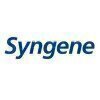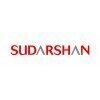
i
Innovassynth Technologies
Filter interviews by
Innovassynth Technologies Mechanical Maintenance Engineer Interview Questions, Process, and Tips
Innovassynth Technologies Mechanical Maintenance Engineer Interview Experiences
2 interviews found
I applied via Referral and was interviewed before Jan 2023. There were 2 interview rounds.
(3 Questions)
- Q1. Why did you leave your last job?
- Q2. Provide me all documents needed
- Q3. What was your last package? Provide salary slip and joining letter.
(9 Questions)
- Q1. Where did you work lastly
- Q2. Why did you leave last company
- Q3. What was your role
- Q4. Tell equipments u handled.
- Ans.
I have handled various equipment including pumps, compressors, turbines, and conveyors.
Pumps: I have experience in maintaining and troubleshooting centrifugal pumps used in industrial processes.
Compressors: I have worked with reciprocating and rotary compressors used for air and gas compression.
Turbines: I have dealt with steam turbines used in power generation and gas turbines used in various applications.
Conveyors: I...
- Q5. What is vacuum drop permissible for reactor vacuum testing?
- Ans.
The permissible vacuum drop for reactor vacuum testing depends on various factors such as the type of reactor and its design specifications.
The permissible vacuum drop can vary depending on the type of reactor being tested.
For some reactors, a vacuum drop of 5-10% may be considered acceptable.
In other cases, a vacuum drop of less than 2% may be required.
The specific permissible vacuum drop should be determined based on...
- Q6. How will you check for pump alignment?
- Ans.
To check for pump alignment, use laser alignment tools and follow a step-by-step process.
Use laser alignment tools to measure and correct misalignment
Start by checking the pump and motor shafts for parallelism and angularity
Measure the offset and angular misalignment using the laser alignment tool
Adjust the pump and motor positions to achieve proper alignment
Recheck the alignment after adjustments and make necessary co...
- Q7. What is temperature of cooling tower water temp?
- Ans.
The temperature of cooling tower water varies depending on the specific system and operating conditions.
The temperature of cooling tower water is typically maintained within a specific range to ensure efficient cooling.
Factors such as ambient temperature, heat load, and water flow rate can influence the cooling tower water temperature.
Cooling tower water temperature can be measured using temperature sensors or thermome...
- Q8. What is unit of pressure?
- Ans.
The unit of pressure is the pascal (Pa).
The pascal is defined as one newton per square meter (N/m²).
Other common units of pressure include pounds per square inch (psi) and atmospheres (atm).
Pressure can also be measured in millimeters of mercury (mmHg) or torr.
In engineering, pressure is often expressed in kilopascals (kPa) or megapascals (MPa).
- Q9. What is ph range?
- Ans.
pH range refers to the scale that measures the acidity or alkalinity of a substance.
pH range is a scale from 0 to 14.
A pH value of 7 is considered neutral.
Values below 7 indicate acidity, with lower values being more acidic.
Values above 7 indicate alkalinity, with higher values being more alkaline.
For example, lemon juice has a pH range of 2-3, making it highly acidic.
Baking soda has a pH range of 8-9, making it slight
Interview Preparation Tips
Worst fitters attitude towards engineers.
There will be unity of production officers and fitters and they will play with your mind like anything in shifts timing.
Production department just want see what will engineers do if fitters are not going to listen 👂🎧 engineers and production incharge will not tell job to fitters though fitters are given for individual plants without getting any permit.
So choose working in general shift as your managers and deputy manger is there to tackle these situation and atleast you can inform to them. In general shift officers will taken into consideration for promotion and credit taken by managers and deputy.
You need to be very talkative rather than hardworking and honest. To be loved by each department you must become news reporter characteristics of telling 👄👂 department updates.
Here Success depends on your relationship with managers and electric department.
Most of old employees are robust and they will act like king.
They will play with your emotions and mentality.
I applied via Referral and was interviewed before Oct 2022. There were 2 interview rounds.
(9 Questions)
- Q1. What are the equipments you handled
- Ans.
I have handled various equipments such as pumps, compressors, valves, motors, and gearboxes in my role as a Mechanical Maintenance Engineer.
Pumps
Compressors
Valves
Motors
Gearboxes
- Q2. What is temperature of cooling tower water temperature?
- Ans.
The temperature of cooling tower water can vary depending on the specific system and operating conditions.
Cooling tower water temperature typically ranges from 70-85 degrees Fahrenheit.
The temperature may be controlled by adjusting the flow rate of water through the tower or by adding chemicals to the water.
Monitoring and maintaining the proper water temperature is important for the efficiency and effectiveness of the
- Q3. Tell me the range of ph
- Ans.
The pH scale ranges from 0 to 14, with 7 being neutral, below 7 acidic, and above 7 alkaline.
pH range is from 0 to 14
7 is considered neutral
Below 7 is acidic
Above 7 is alkaline
Examples: Lemon juice has a pH of around 2, pure water has a pH of 7, and baking soda has a pH of around 9
- Q4. How much is atm pressure?
- Ans.
Standard atmospheric pressure is approximately 101.3 kilopascals or 14.7 pounds per square inch.
Standard atmospheric pressure is 101.3 kPa or 14.7 psi
At sea level, the average atmospheric pressure is 101.3 kPa or 14.7 psi
Pressure decreases with altitude, so atmospheric pressure is lower at higher elevations
- Q5. How much Vacuum drop is permisible?
- Ans.
Vacuum drop should be minimal, typically less than 2 inches of mercury.
Vacuum drop should be monitored regularly to ensure efficient operation.
Excessive vacuum drop can indicate leaks or issues with the system.
Typically, a vacuum drop of less than 2 inches of mercury is considered permissible.
Consult manufacturer guidelines for specific acceptable vacuum drop limits.
- Q6. What is brine and its content?
- Ans.
Brine is a solution of salt in water, commonly used for preserving food and de-icing roads.
Brine is composed of water and salt
It is commonly used for pickling vegetables and meats
Brine is also used for de-icing roads in cold climates
- Q7. Which water is used in boiler?
- Ans.
Boiler typically uses demineralized or deionized water to prevent scale buildup and corrosion.
Demineralized water
Deionized water
Reverse osmosis water
Distilled water
- Q8. Why alum and chlorine is used in water?
- Ans.
Alum and chlorine are used in water treatment to remove impurities and kill harmful bacteria.
Alum is used to coagulate impurities in water, making them easier to remove through filtration.
Chlorine is used as a disinfectant to kill harmful bacteria and pathogens in water.
Alum and chlorine together help in making water safe for consumption by removing impurities and killing bacteria.
Alum can also help in reducing the tur...
- Q9. What are types of impeller
- Ans.
Types of impellers include open, semi-open, closed, and shrouded impellers.
Open impeller: consists of blades attached to a central hub with no cover, allowing for easy flow of fluid.
Semi-open impeller: has blades attached to a central hub with one side open, providing higher efficiency compared to open impellers.
Closed impeller: features blades attached to a central hub with both sides covered, offering higher efficien...
(3 Questions)
- Q1. When you will going to join
- Q2. Give me your certificates, marksheets and leaving certificate, pan and aadhar card, experience certificate
- Q3. Provided the required
Interview Preparation Tips
Top trending discussions






Interview questions from similar companies

Mechanical Maintenance Engineer Interview Questions & Answers
Deepak Fertilisers and Petrochemicalsposted on 19 Oct 2024
(2 Questions)
- Q1. What is compressor and it's types
- Ans.
A compressor is a mechanical device that increases the pressure of a gas by reducing its volume.
Types of compressors include reciprocating, rotary screw, centrifugal, and scroll compressors
Reciprocating compressors use pistons to compress gas
Rotary screw compressors use two rotating screws to compress gas
Centrifugal compressors use a rotating impeller to create high-velocity gas flow
Scroll compressors use two interleav
- Q2. SAP HANA S4 T codes
Interview Preparation Tips

Mechanical Maintenance Engineer Interview Questions & Answers
Chemplast Sanmarposted on 21 Sep 2023

(2 Questions)
- Q1. Mechanical rotary and safety related questions
- Q2. Family introduction and self introduction
Interview Preparation Tips

Mechanical Maintenance Engineer Interview Questions & Answers
India Glycolsposted on 23 Apr 2023
I applied via Campus Placement and was interviewed in Mar 2023. There were 4 interview rounds.

Written test of Core subjects
(1 Question)
- Q1. Introduction, Internship,Aim
(1 Question)
- Q1. Dream , Resume ,Project , Motive

Mechanical Maintenance Engineer Interview Questions & Answers
Meghmani Organicsposted on 8 Apr 2023
I applied via Walk-in and was interviewed before Apr 2022. There were 2 interview rounds.

(2 Questions)
- Q1. 1. Types of Pump 2. Types of casing 3. Plant process 4. Major maintenance attend in your perious organisation periods 5. Centrifuge pusher 6. Mechanical seals 7. Boiler and Thermic fluid heater questions i...
- Ans.
Questions related to types of pumps, casing, plant process, maintenance, centrifuge pusher, mechanical seals, boiler and thermic fluid heater, pump efficiency, head measurement, and alignment method.
Types of pumps include centrifugal, reciprocating, and rotary pumps
Types of casing include volute, diffuser, and multistage casing
Plant process involves the steps and equipment used in a manufacturing process
Major maintenan...
- Q2. Mee plant? Process regarding?
Interview Preparation Tips
- Pumps
- Boiler
- RO Plant
- Mee plant
- Centrifuge pusher

I applied via campus placement at Central Institute of Plastics Engineering and Technology, Haldia and was interviewed in Nov 2024. There was 1 interview round.
Logical reasoning, quant, verbal

I applied via Walk-in and was interviewed in Oct 2022. There were 3 interview rounds.

Management study skill development progress program.
(6 Questions)
- Q1. Hr management about this faculty was very clearly and not one number or skill products or party seller
- Q2. Travels seller products addition management security hr or system
- Q3. About this conditions roll or human resources company management
- Q4. Security lock sweeper
- Q5. Engineer security level or lock faculty system
- Q6. Humbled flexible strike advisor company sellers
Interview Preparation Tips
- Culture party techancal
- System Administration
- Operating Systems
- Party Reconciliation
- Interviewing
- Communication Skills
- Selling

Mechanical Engineer Interview Questions & Answers
Gujarat Fluorochemicalsposted on 28 Mar 2024
I applied via Walk-in and was interviewed before Mar 2023. There were 2 interview rounds.
(3 Questions)
- Q1. Which pipe line used in Huzardous chemicals?
- Ans.
Stainless steel pipelines are commonly used for transporting hazardous chemicals due to their corrosion resistance and durability.
Stainless steel pipelines are preferred for their resistance to corrosion from hazardous chemicals.
PVC pipelines are not suitable for hazardous chemicals as they can degrade and leak.
Carbon steel pipelines can be used for some hazardous chemicals, but may require additional coatings or linin...
- Q2. How to calculate the steam of boiler?
- Ans.
To calculate the steam of a boiler, you need to know the boiler's efficiency, steam flow rate, and specific enthalpy of steam.
Calculate the energy input by multiplying the mass flow rate of steam by the specific enthalpy of steam.
Determine the energy output by dividing the energy input by the boiler's efficiency.
The steam flow rate can be measured using a flow meter, and the specific enthalpy of steam can be obtained f...
- Q3. Draw the module of coal fired hot air generator
- Ans.
The module of a coal fired hot air generator typically includes a combustion chamber, heat exchanger, fan, and exhaust system.
Combustion chamber where coal is burned to produce heat
Heat exchanger to transfer heat from combustion gases to the air
Fan to circulate the heated air
Exhaust system to remove combustion byproducts
(2 Questions)
- Q1. Why do you want to change the company?
- Q2. Are you ready to relocate?
Interview Preparation Tips

Mechanical Technician Interview Questions & Answers
Kansai Nerolac Paintsposted on 18 Oct 2021
I applied via Walk-in
Interview Questionnaire
4 Questions
- Q1. Maintenance machical packing department
- Q2. All conver maintenance packing department
- Q3. All pump maintenance and wpb
- Q4. Senior technician mechanical maintenance
Interview Preparation Tips
Innovassynth Technologies Interview FAQs
Tell us how to improve this page.
Innovassynth Technologies Interviews By Designations
- Innovassynth Technologies Mechanical Maintenance Engineer Interview Questions
- Innovassynth Technologies Mechanical Maintenance Officer Interview Questions
- Innovassynth Technologies Api Production Executive Interview Questions
- Innovassynth Technologies Finance Manager Interview Questions
- Innovassynth Technologies Officer QC & QA Interview Questions
- Innovassynth Technologies Scientist Interview Questions
- Innovassynth Technologies Senior Accounts Officer Interview Questions
- Innovassynth Technologies Senior Officer Interview Questions
- Show more
Interview Questions for Popular Designations
- Mechanical Engineer Interview Questions
- Diploma Mechanical Engineer Interview Questions
- Mechanical Technician Interview Questions
- Senior Engineer Mechanical Interview Questions
- Mechanical Supervisor Interview Questions
- Junior Mechanical Engineer Interview Questions
- Mechanical Fitter Interview Questions
- Mechanical Maintenance Fitter Interview Questions
- Show more
Innovassynth Technologies Mechanical Maintenance Engineer Interview Process
based on 2 interviews
Interview experience
Mechanical Maintenance Engineer Interview Questions from Similar Companies
Innovassynth Technologies Mechanical Maintenance Engineer Reviews and Ratings
based on 1 review
Rating in categories
|
Production Officer
104
salaries
| ₹1.9 L/yr - ₹4.4 L/yr |
|
Senior Production Officer
36
salaries
| ₹3.8 L/yr - ₹6.6 L/yr |
|
Senior Officer
29
salaries
| ₹3.5 L/yr - ₹8.2 L/yr |
|
Deputy Manager
24
salaries
| ₹5 L/yr - ₹13 L/yr |
|
Officer
22
salaries
| ₹2.9 L/yr - ₹5.1 L/yr |

DIVI'S Laboratories

Suven Life Sciences

Laurus Labs

Syngene International
- Home >
- Interviews >
- Innovassynth Technologies Interview Questions >
- Innovassynth Technologies Mechanical Maintenance Engineer Interview Questions







